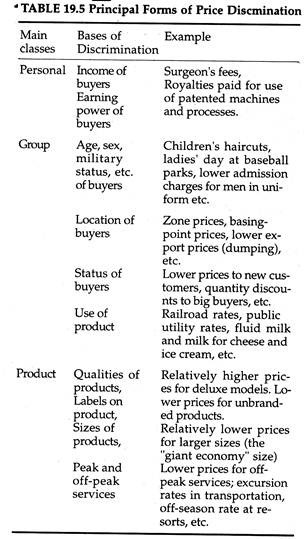In this article we will discuss about the Differentials and Discriminations of Price.
Differentials of Price:
One of the most critical areas of pricing is the problem of justifying price differentials.
This problem may arise:
(1) When a customer believes that he or she has been illegally charged a price higher than the price charged to other customers for the same product;
ADVERTISEMENTS:
(2) When a competitor believes that a rival’s prices are lower in markets where they both compete, than in markets where they do not compete;
(3) When the government believes that competing customers of a seller are charged different prices; and
(4) When price increases must be justified to customers, sales force, or a price control board. K. B. Monroe has pointed out that the first conditions generally arise as a result of legal proceedings following illegal price discrimination.
The fourth condition prevails during inflationary periods.
ADVERTISEMENTS:
Cost justification of price differentials seems to have wider application than various other approaches. A valid cost justification can be used to prevent legal action and to soothe disgruntled customers.
Discrimination of Price:
A number of complications are involved in differential pricing, or price discrimination, when the firm sells its production multiple markets. In fact, price discrimination is a special case of pricing of multiple products.
Economically, price discrimination occurs whenever there are price differences for the same product or service sold by a single seller, that are not justified by cost differences or by changes in the level of demand, or when different customers are charged the same price but costs differ (e.g., shipping charges absorbed by the supplier).
Price discrimination also occurs when two or more buyers of the same product or service are charged the same price despite differences in the cost of serving these buyers. Therefore, in order to know whether price discrimination exists, in the economic sense, between two or more buyers, it is necessary to know both the price and the total relevant costs applicable in each instance of possible discrimination.
ADVERTISEMENTS:
Price discrimination may arise in a variety of ways. The product sold to serve buyers may be physically different — i.e., of different quality. There may be differences in services that accompany the products, for example, delivery, storage, credit extension, sales force efforts.
Some buyers may qualify for volume, cash, or trade discounts. Hence, whether there is price discrimination in the economic sense depends on analysing the factual detail surrounding the involved transactions. See Table. 19.5.
